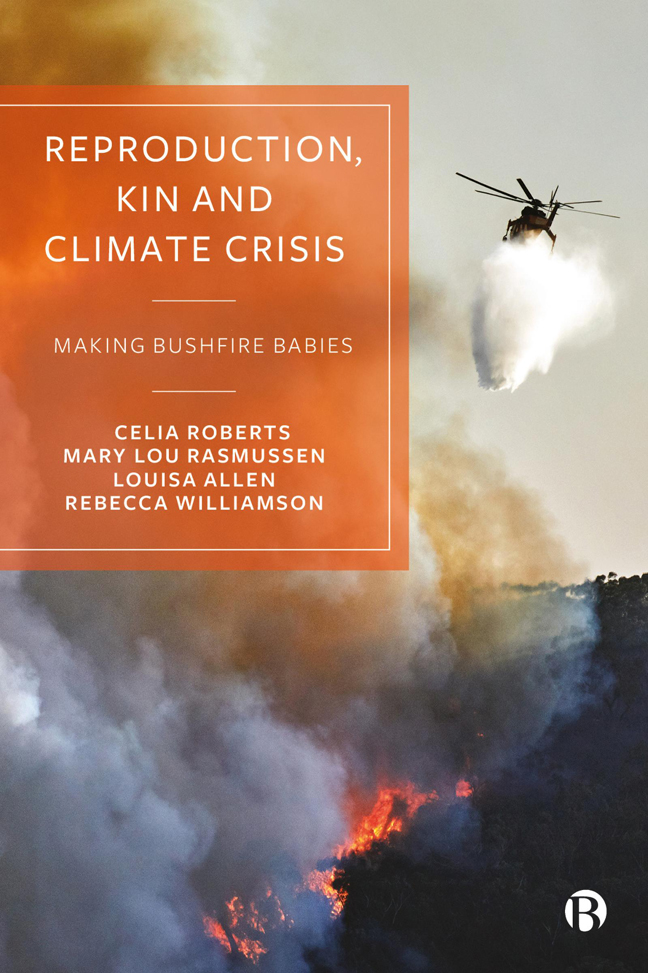Book contents
- Frontmatter
- Contents
- List of Figures and Table
- Notes on the Figures
- Notes on the Authors
- Acknowledgements
- Interleave 1
- 1 Reproducing in Climate Crisis
- Interleave 2
- 2 Methods in Crisis
- Interleave 3
- 3 Breath, Breathing and ‘Mum-Guilt’
- Interleave 4
- 4 Smoke, Machines and Public Health
- Interleave 5
- 5 Kin, Care and Crises
- Interleave 6
- 6 Pyro-reproductive Futures
- Interleave 7
- 7 Making Bushfire Babies
- Notes
- References
- Index
5 - Kin, Care and Crises
Published online by Cambridge University Press: 24 January 2024
- Frontmatter
- Contents
- List of Figures and Table
- Notes on the Figures
- Notes on the Authors
- Acknowledgements
- Interleave 1
- 1 Reproducing in Climate Crisis
- Interleave 2
- 2 Methods in Crisis
- Interleave 3
- 3 Breath, Breathing and ‘Mum-Guilt’
- Interleave 4
- 4 Smoke, Machines and Public Health
- Interleave 5
- 5 Kin, Care and Crises
- Interleave 6
- 6 Pyro-reproductive Futures
- Interleave 7
- 7 Making Bushfire Babies
- Notes
- References
- Index
Summary
Care, kinship and climate, and their ambivalent terrains (Puig de la Bellacasa, 2017: 5) are our focus in this chapter. Feminist technoscience studies scholar Maria Puig de la Bellacasa attends to the maintenance of care in interdependent worlds. This maintenance, she argues, has ‘ethical and affective implications’. She urges ‘staying with the tensions between these dimensions’ (2017: 5). It is these tensions that animate our analysis. While our initial focus in developing this study was the bushfires, COVID-19 is now woven into all of our lives. The pandemic and bushfire smoke are intertwined in our participants’ accounts. Across 2020, takenfor-granted rituals and relations became impossible, or only possible in very small windows, or with particular people/professionals: COVID restrictions resulted in maternal health nurses parked in cars outside houses interviewing mothers to be about their babies’ health before quickly slipping inside homes to take measurements that weren't possible from a distance. Exploring COVID-19, the smoke and fires together, we see how plans for care and kinship associated with birth and new parenting were, sometimes very hastily, renegotiated – often in ways that participants felt were unsatisfactory, although not always. A few participants pointed to silver linings in the ways in which normative expectations in relations to kinship were necessarily disrupted.
In this chapter we have separated stories about fire from stories about smoke and about COVID-19. While we are thinking about how these crises are interwoven, examining each distinctly helps us see how care is queered by, and resonates through, each event. In 2020, our participants became interdependent in ways that they could not have foreseen, and sometimes this was a source of added tension (for example, when families found themselves negotiating evacuation orders in the midst of fires). During the pandemic, participants sometimes felt robbed of dreams of interdependence that they had carefully cultivated with a pre-pandemic mindset. In interviews, we asked how and when our participants looked for help and who was able to answer that call. Here, we also attend to how they accessed institutional care in times of crisis, and the absences they felt in terms of medical care. Care maps our participants created (some of which are reproduced in Chapter 2) trace the ambivalent terrains of care that surfaced in these intra-actions and entanglements.
- Type
- Chapter
- Information
- Reproduction, Kin and Climate CrisisMaking Bushfire Babies, pp. 115 - 146Publisher: Bristol University PressPrint publication year: 2023

